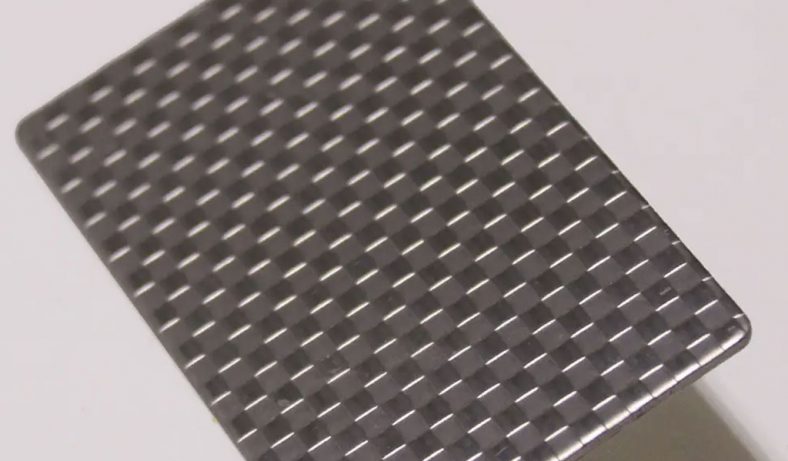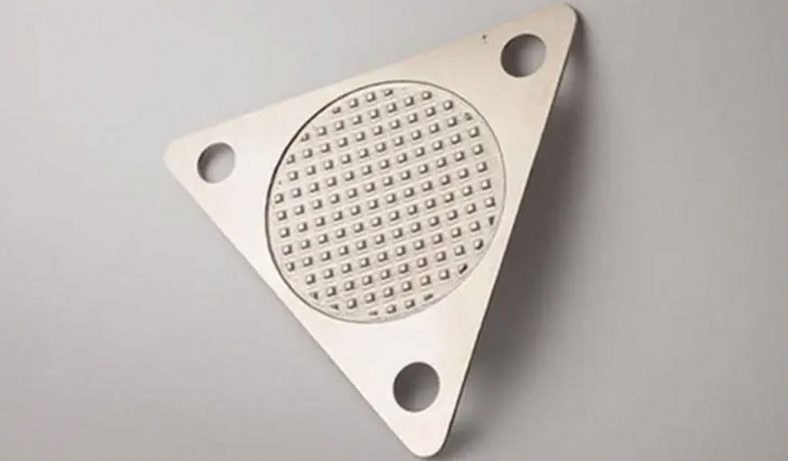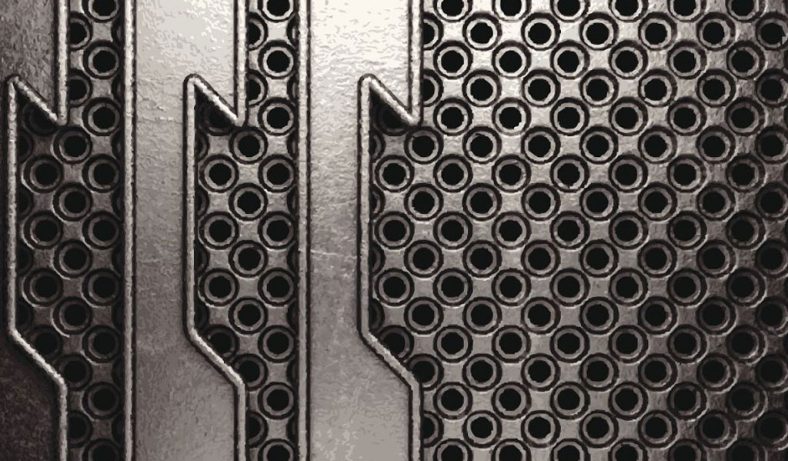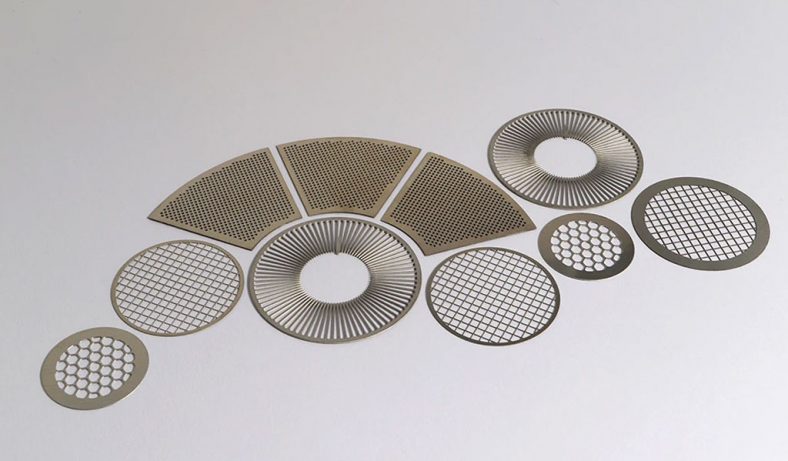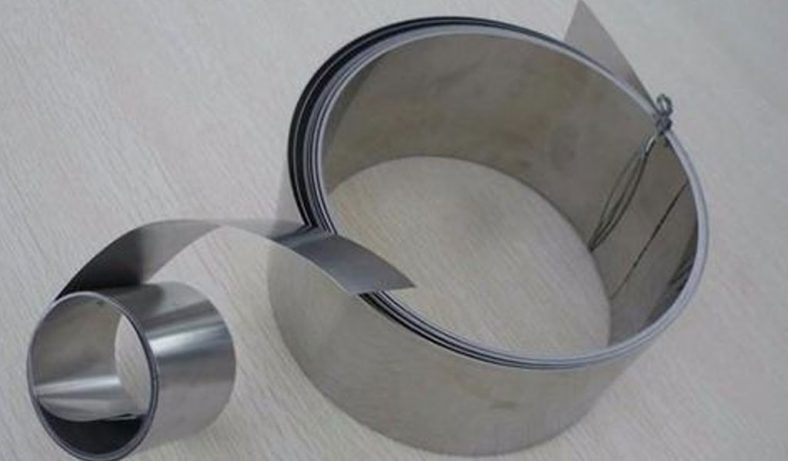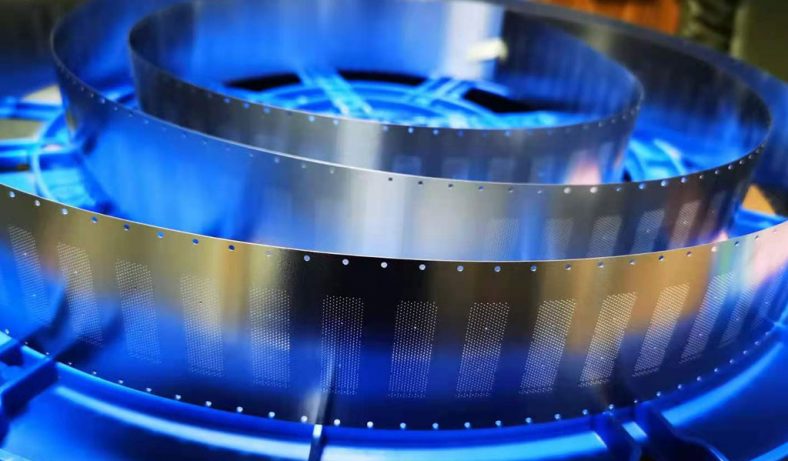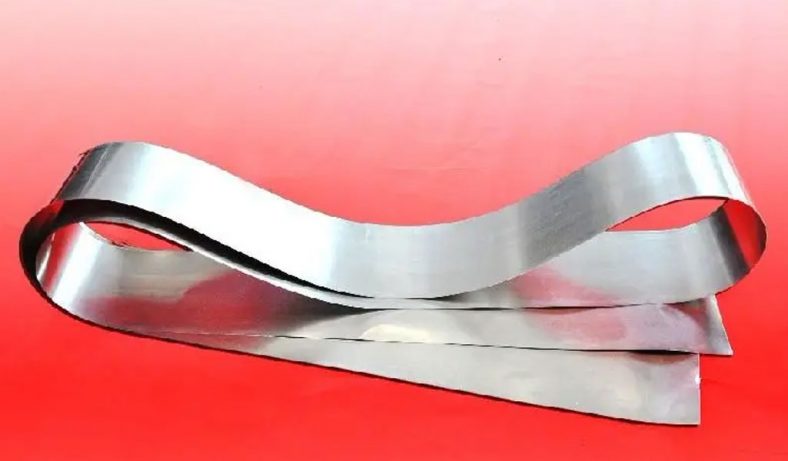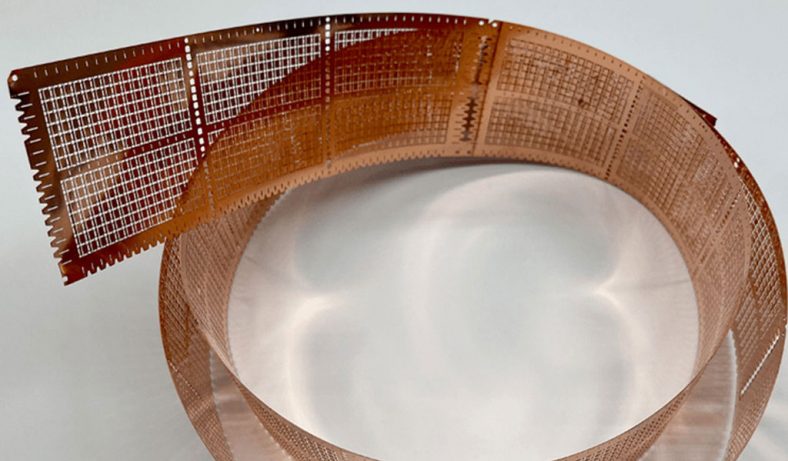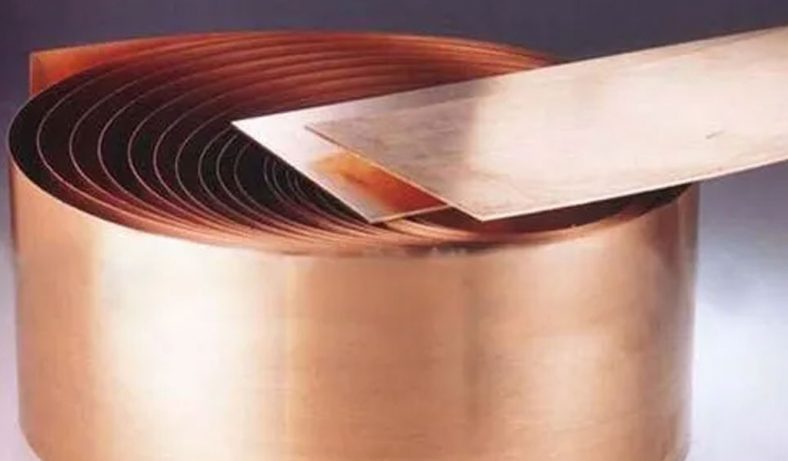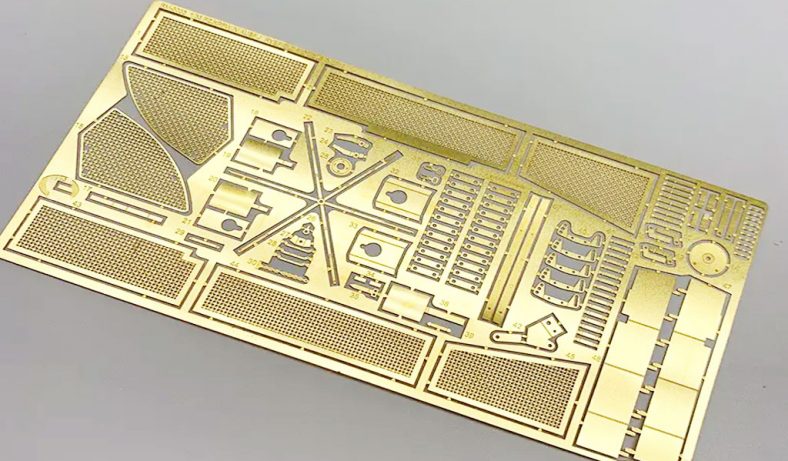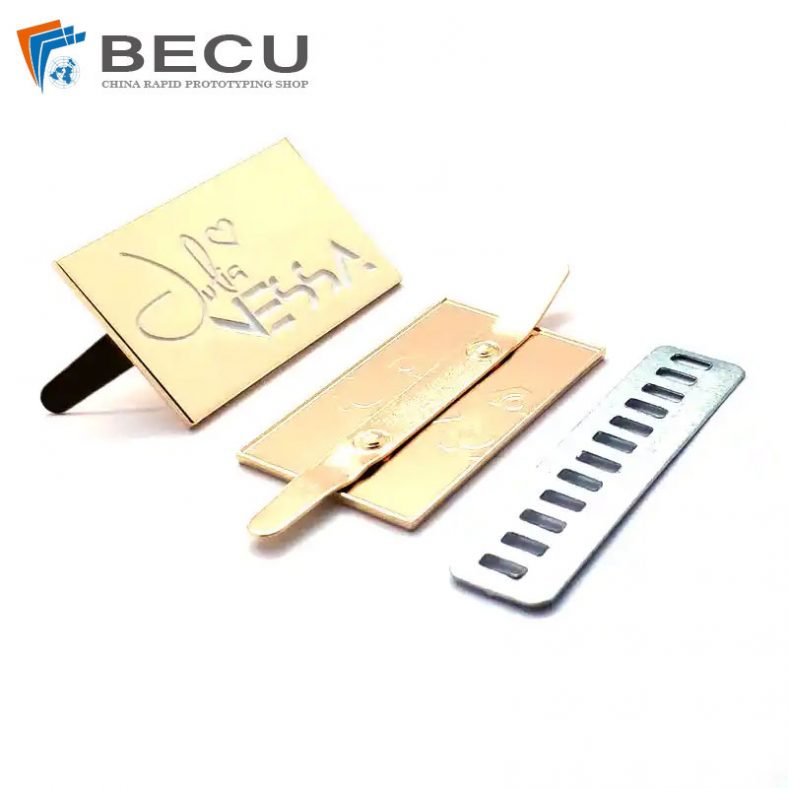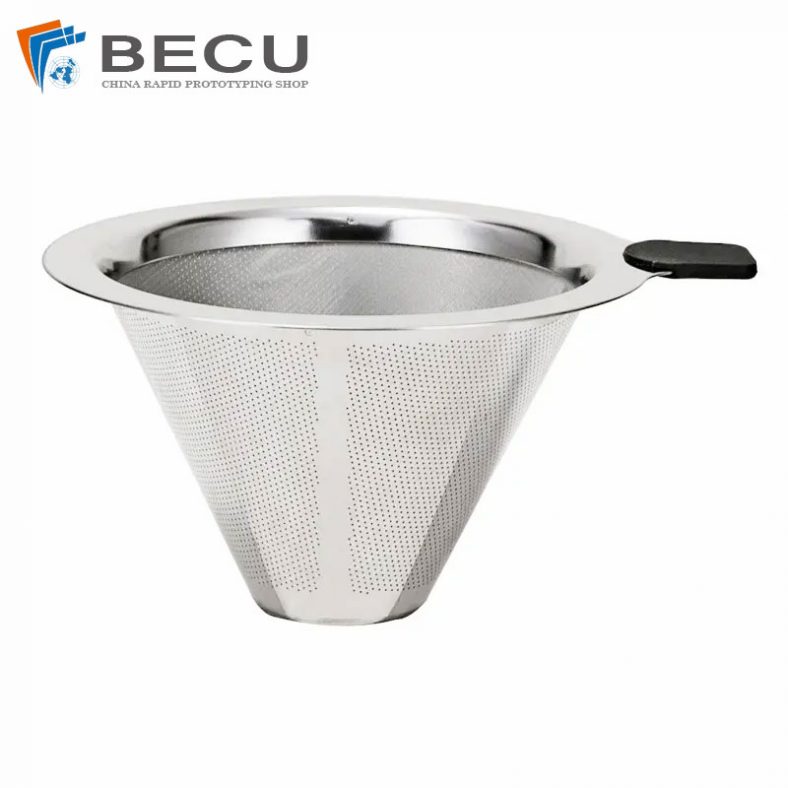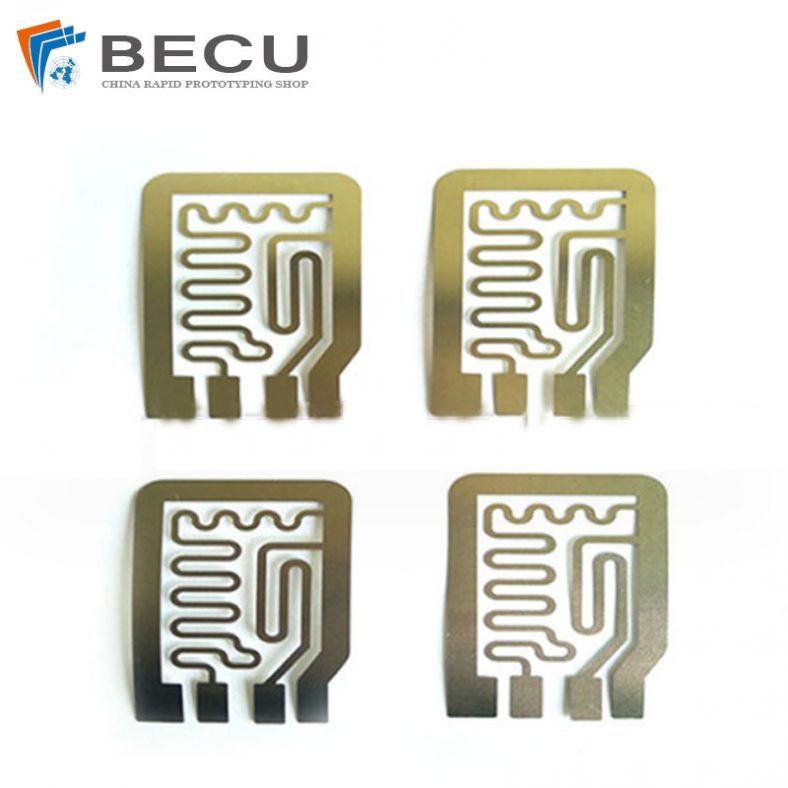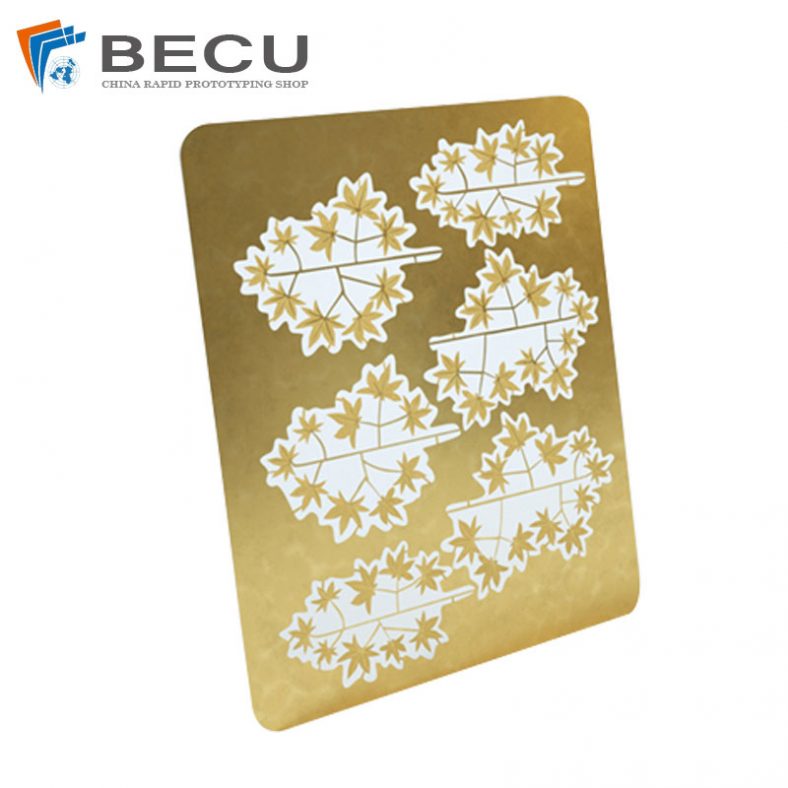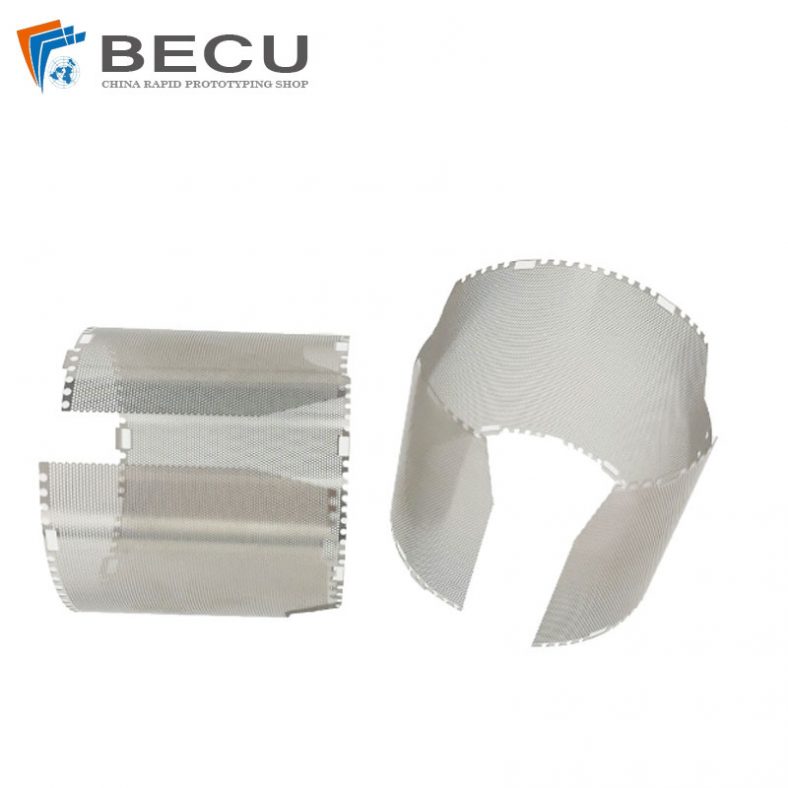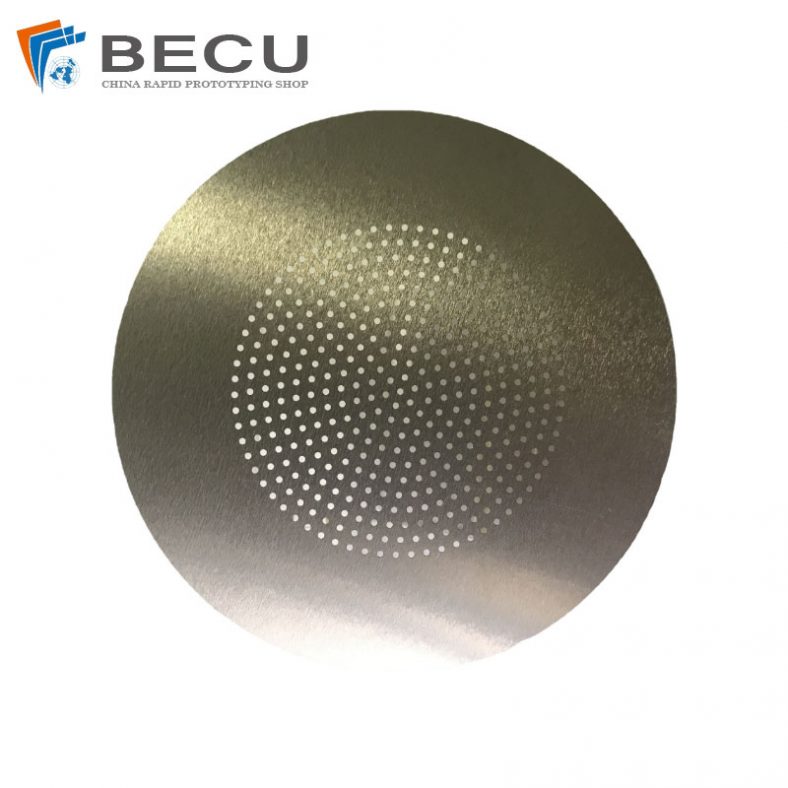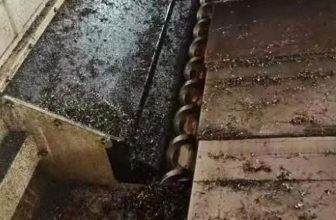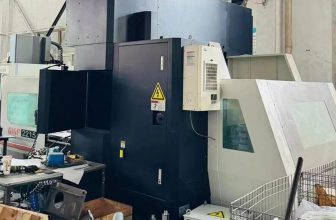Reactive ion etching (RIE) is a pivotal dry etching technology extensively utilized in microfabrication to create precise microstructures on various substrates. Its application in preparing magnesium alloy microstructures has gained significant attention due to magnesium alloys’ unique properties, such as low density, high strength-to-weight ratio, and excellent biocompatibility. These attributes make magnesium alloys ideal for applications in aerospace, automotive, biomedical, and microelectromechanical systems (MEMS). However, the chemical reactivity and susceptibility to corrosion of magnesium alloys pose challenges in microfabrication, necessitating advanced techniques like RIE to achieve high-resolution, anisotropic patterns.
RIE combines chemical etching with physical ion bombardment, using a plasma of reactive gases to remove material selectively from a substrate. This process offers superior control over etch profiles compared to wet etching, enabling the creation of high-aspect-ratio features critical for advanced microsystems. In the context of magnesium alloys, RIE facilitates the fabrication of intricate microstructures, such as microfluidic channels, biomedical implants, and lightweight structural components, by precisely controlling etch rates, anisotropy, and surface morphology.
This article provides a comprehensive exploration of RIE’s application in preparing magnesium alloy microstructures. It covers the principles of RIE, the properties of magnesium alloys, process parameters, challenges, recent advancements, and case studies. Detailed comparisons of etching techniques, gas chemistries, and equipment are presented in tables to elucidate the advantages and limitations of RIE for magnesium alloy microfabrication.
Principles of Reactive Ion Etching
Overview of RIE
Reactive ion etching is a plasma-based dry etching process that integrates chemical and physical mechanisms to remove material from a substrate. The process occurs in a vacuum chamber where reactive gases are ionized into a plasma by applying a radio-frequency (RF) electromagnetic field. The plasma consists of ions, electrons, and neutral species, which interact with the substrate surface to achieve material removal. The key components of an RIE system include a vacuum chamber, gas delivery system, electrodes, and an exhaust system to remove byproducts.
In RIE, the substrate, typically covered with a patterned mask, is placed on a wafer platter. The plasma generates reactive ions that are accelerated toward the substrate by an electric field, resulting in both chemical reactions and physical sputtering. Chemical etching occurs when reactive species form volatile compounds with the substrate material, which are then evacuated. Physical sputtering involves the mechanical removal of material due to ion bombardment, enhancing anisotropy by preferentially etching in the vertical direction.
Anisotropy and Selectivity
Anisotropy, the ability to etch directionally, is a hallmark of RIE, distinguishing it from isotropic wet etching. The directional nature of ion bombardment ensures minimal undercutting of the mask, enabling the creation of high-aspect-ratio features with vertical sidewalls. Selectivity, the ratio of the etch rate of the target material to that of the mask or underlying layers, is critical for precise patterning. High selectivity ensures that the mask remains intact during etching, preserving pattern fidelity.
For magnesium alloys, achieving anisotropy and selectivity is challenging due to their reactivity and tendency to form non-volatile etch byproducts. The choice of reactive gases, plasma parameters, and mask materials significantly influences these properties, as discussed in subsequent sections.
Plasma Generation and Chemistry
Plasma in RIE is generated by applying RF power (typically 13.56 MHz) to a gas mixture, ionizing it into a plasma state. Common reactive gases include fluorine-based (e.g., SF₆, CF₄), chlorine-based (e.g., Cl₂, BCl₃), and oxygen-based (O₂) gases, selected based on the substrate material. For magnesium alloys, chlorine-based chemistries are often preferred due to their ability to form volatile magnesium chloride (MgCl₂), which can be easily removed from the chamber.
The plasma chemistry involves complex interactions between ions, radicals, and neutral species. For example, in a chlorine-based plasma, Cl₂ dissociates into Cl⁺ ions and Cl radicals, which react with magnesium to form MgCl₂. The addition of inert gases like argon (Ar) enhances physical sputtering, improving etch rates and anisotropy. The balance between chemical and physical etching is tuned by adjusting gas ratios, RF power, and chamber pressure.
Magnesium Alloys: Properties and Applications
Composition and Characteristics
Magnesium alloys are lightweight metallic materials composed primarily of magnesium, alloyed with elements such as aluminum (Al), zinc (Zn), manganese (Mn), and rare earth elements (e.g., cerium, neodymium). Common alloys include AZ31 (Mg-3%Al-1%Zn), AZ91 (Mg-9%Al-1%Zn), and WE43 (Mg-Y-rare earth). These alloys exhibit a density of approximately 1.74 g/cm³, significantly lower than aluminum (2.7 g/cm³) and steel (7.8 g/cm³), making them attractive for weight-sensitive applications.
Magnesium alloys possess a high strength-to-weight ratio, good thermal conductivity, and excellent machinability. However, their high chemical reactivity, particularly in aqueous environments, leads to corrosion, necessitating surface treatments or coatings. In microfabrication, this reactivity complicates wet etching, as magnesium alloys readily react with acidic or alkaline etchants, resulting in isotropic etching and poor dimensional control.
Applications of Magnesium Alloy Microstructures
The unique properties of magnesium alloys enable their use in diverse microfabrication applications:
- Biomedical Devices: Magnesium alloys are biodegradable, making them ideal for temporary implants such as stents, screws, and plates. Microstructures like porous scaffolds or microfluidic channels enhance biocompatibility and drug delivery.
- Aerospace and Automotive: Lightweight magnesium alloy microstructures, such as lattice structures or heat exchangers, reduce fuel consumption in aircraft and vehicles.
- MEMS: Magnesium alloys are used in MEMS components like accelerometers, gyroscopes, and microfluidic devices, where precise microstructures improve performance.
- Energy Storage: Microstructured magnesium alloy electrodes in batteries enhance surface area, improving charge-discharge efficiency.
The fabrication of these microstructures requires precise etching techniques like RIE to achieve the necessary resolution and aspect ratios.
RIE Process Parameters for Magnesium Alloys
Gas Chemistry
The choice of gas chemistry is critical in RIE of magnesium alloys, as it determines etch rate, selectivity, and surface morphology. Chlorine-based gases, such as Cl₂ and BCl₃, are widely used due to their ability to form volatile MgCl₂. BCl₃ also scavenges oxygen and water vapor, reducing oxide formation on magnesium surfaces. Fluorine-based gases (e.g., SF₆, CF₄) are less common, as magnesium fluoride (MgF₂) is less volatile, leading to slower etch rates and potential surface passivation.
Inert gases like argon or helium are often added to enhance physical sputtering, improving anisotropy. Oxygen (O₂) may be introduced in small quantities to control sidewall passivation by forming thin oxide layers, though excessive oxygen can inhibit etching by forming non-volatile MgO. The gas mixture is typically optimized empirically, with ratios such as Cl₂:BCl₃:Ar (50:30:20) commonly reported for magnesium alloys.
RF Power and Bias
RF power controls plasma density and ion energy, directly affecting etch rate and anisotropy. Higher RF power increases ion bombardment, enhancing physical etching but potentially reducing selectivity by eroding the mask. For magnesium alloys, RF power typically ranges from 100 to 500 W, with lower powers (100–200 W) favoring chemical etching and higher powers (300–500 W) improving anisotropy.
Substrate bias, controlled by platen power, influences the directionality of ion bombardment. A bias of 50–200 V is often used to achieve vertical etch profiles without excessive mask erosion. Careful tuning of RF power and bias is necessary to balance etch rate and feature quality.
Chamber Pressure
Chamber pressure affects plasma density and ion mean free path. Low pressures (1–10 mTorr) promote anisotropic etching by increasing ion directionality, while higher pressures (20–100 mTorr) enhance chemical etching but may lead to isotropic profiles. For magnesium alloys, pressures of 5–20 mTorr are typically used to achieve high-aspect-ratio features.
Temperature Control
Substrate temperature influences etch rate and surface chemistry. Magnesium alloys are sensitive to temperature, as elevated temperatures (>100°C) can enhance corrosion or alter alloy microstructure. Cryogenic etching, at temperatures as low as -100°C, has been explored to improve anisotropy by reducing spontaneous chemical reactions. Room-temperature etching (20–30°C) is common, with cooling systems employed to maintain thermal stability.
Mask Materials
The choice of mask material is critical for achieving high selectivity and pattern fidelity. Common masks for magnesium alloy etching include:
- Photoresist: Organic photoresists (e.g., AZ series) are cost-effective but have low selectivity (1:1 to 5:1) due to erosion under ion bombardment.
- Hard Masks: Materials like silicon dioxide (SiO₂), silicon nitride (Si₃N₄), or metals (e.g., nickel, titanium) offer higher selectivity (10:1 to 50:1) and are preferred for deep etching. SiO₂ is particularly effective due to its resistance to chlorine-based plasmas.
- Metal Masks: Aluminum or chromium masks are used for high-aspect-ratio etching, though they may require additional deposition and patterning steps.
Mask thickness and adhesion to the magnesium alloy surface are critical to prevent delamination or undercutting during etching.
Challenges in RIE of Magnesium Alloys
Chemical Reactivity
Magnesium alloys’ high reactivity complicates RIE, as they readily form oxides (MgO) or hydroxides (Mg(OH)₂) in the presence of oxygen or moisture. These compounds are non-volatile and can inhibit etching, leading to rough surfaces or incomplete patterns. Pre-etch cleaning, using argon plasma or dilute acids, is often employed to remove native oxides. In-situ plasma cleaning with BCl₃ can further mitigate oxide formation during etching.
Non-Volatile Byproducts
Unlike silicon or aluminum, where volatile etch products (e.g., SiF₄, AlCl₃) are easily removed, magnesium alloys produce semi-volatile or non-volatile byproducts like MgCl₂ or MgF₂. MgCl₂ is volatile at low pressures but may deposit on sidewalls at higher pressures, causing micro-masking or rough surfaces. MgF₂, formed in fluorine-based plasmas, is highly stable and requires high ion energy for removal, reducing etch efficiency.
Corrosion and Surface Damage
Magnesium alloys are prone to corrosion during and after etching, particularly in chlorine-based plasmas, where residual Cl⁺ ions can react with the alloy surface. Post-etch treatments, such as rinsing with deionized water or plasma ashing, are necessary to remove corrosive residues. Ion bombardment can also induce surface damage, such as lattice defects or amorphization, affecting mechanical properties.
Mask Erosion and Selectivity
Achieving high selectivity is challenging due to the aggressive nature of chlorine-based plasmas, which can erode organic photoresists rapidly. Hard masks improve selectivity but increase process complexity and cost. Balancing mask durability with etch depth is a key consideration for deep microstructures.
Thermal Sensitivity
Magnesium alloys undergo phase transformations or grain growth at elevated temperatures, altering their microstructure and mechanical properties. Excessive heating during RIE, due to ion bombardment or plasma energy, must be mitigated through effective cooling systems or low-power etching conditions.
Recent Advancements in RIE for Magnesium Alloys
Inductively Coupled Plasma (ICP) RIE
Inductively coupled plasma (ICP) RIE, an advanced variant of RIE, uses a high-density plasma generated by an RF-powered magnetic field. ICP-RIE offers higher etch rates and improved anisotropy compared to traditional parallel-plate RIE, making it suitable for deep magnesium alloy etching. The ability to independently control plasma density (via ICP power) and ion energy (via substrate bias) allows precise tuning of etch profiles.
Recent studies have demonstrated ICP-RIE of AZ31 magnesium alloy using Cl₂/BCl₃/Ar plasmas, achieving etch rates of 0.5–1 µm/min and aspect ratios up to 10:1. The addition of oxygen in small amounts (2–5%) enhances sidewall passivation, reducing lateral etching. ICP-RIE has also enabled the fabrication of complex 3D microstructures, such as hierarchical scaffolds for biomedical applications.
Cryogenic Etching
Cryogenic RIE, conducted at temperatures below -50°C, reduces spontaneous chemical etching, enhancing anisotropy. For magnesium alloys, SF₆-based cryogenic etching has shown promise, as low temperatures stabilize volatile MgCl₂ formation while minimizing sidewall reactions. A study reported an etch rate of 0.3 µm/min at -80°C, with vertical sidewalls and minimal surface roughness.
Pulsed Bias Etching
Pulsed bias etching alternates between high and low bias voltages, reducing ion-induced damage and improving selectivity. This technique has been applied to magnesium alloys to minimize surface defects while maintaining high etch rates. Pulsed ICP-RIE with Cl₂/Ar plasmas achieved a 20% reduction in surface roughness compared to continuous bias etching.
Atomic Layer Etching (ALE)
Atomic layer etching (ALE) is an emerging technique that provides atomic-scale precision by alternating self-limiting chemical adsorption and desorption steps. While primarily developed for semiconductors, ALE has been adapted for magnesium alloys using Cl₂-based chemistries. ALE offers sub-nanometer control, ideal for ultra-thin microstructures in MEMS or biomedical devices.
Hybrid Etching Processes
Combining RIE with other techniques, such as metal-assisted chemical etching (MACE) or laser micromachining, enhances microfabrication capabilities. For example, MACE can pre-pattern magnesium alloy surfaces, followed by RIE to refine high-aspect-ratio features. Hybrid processes improve throughput and enable complex 3D structures.
Case Studies
Biomedical Scaffolds
Magnesium alloy scaffolds for bone regeneration require porous microstructures to promote cell adhesion and nutrient transport. ICP-RIE with Cl₂/BCl₃/O₂ plasmas was used to etch AZ91 alloy, creating pores with diameters of 10–50 µm and depths up to 100 µm. The process achieved a selectivity of 15:1 with a SiO₂ mask, and post-etch coating with hydroxyapatite enhanced biocompatibility. The scaffolds exhibited a 40% improvement in cell viability compared to unetched controls.
Microfluidic Channels
Microfluidic devices for drug delivery or lab-on-chip systems require precise channels in magnesium alloys. RIE with Cl₂/Ar plasmas etched AZ31 alloy to form channels 20 µm wide and 50 µm deep, with vertical sidewalls and a surface roughness of 10 nm. The use of a nickel mask ensured high selectivity, and post-etch passivation with a polymer coating prevented corrosion in aqueous environments.
Lightweight Lattice Structures
In aerospace applications, magnesium alloy lattice structures reduce weight while maintaining strength. ICP-RIE with BCl₃/Ar plasmas etched WE43 alloy to create lattice patterns with 100 µm feature sizes and aspect ratios of 8:1. The process achieved an etch rate of 0.8 µm/min, and the resulting structures exhibited a 30% weight reduction compared to solid components.
Comparative Analysis
Comparison of Etching Techniques
The following table compares RIE with other etching techniques for magnesium alloy microfabrication:
| Technique | Anisotropy | Etch Rate (µm/min) | Selectivity | Surface Roughness | Cost | Applications |
|---|---|---|---|---|---|---|
| Reactive Ion Etching (RIE) | High | 0.3–1.0 | 5:1–50:1 | Low (5–20 nm) | High | MEMS, Biomedical |
| Wet Chemical Etching | Low | 1–10 | 1:1–5:1 | High (50–200 nm) | Low | Bulk Machining |
| Metal-Assisted Chemical Etching (MACE) | Moderate | 0.5–5 | 2:1–10:1 | Moderate (20–100 nm) | Moderate | Nanostructures |
| Laser Micromachining | Moderate | 0.1–2 | 1:1–10:1 | High (100–500 nm) | High | Prototyping |
| Deep Reactive Ion Etching (DRIE) | Very High | 1–10 | 10:1–100:1 | Very Low (2–10 nm) | Very High | Advanced MEMS |
RIE offers superior anisotropy and surface quality compared to wet etching and MACE, though at a higher cost. DRIE, while more advanced, is less commonly used for magnesium alloys due to equipment complexity.
Gas Chemistry Comparison
The following table compares common gas chemistries for RIE of magnesium alloys:
| Gas Mixture | Primary Reactive Species | Etch Rate (µm/min) | Anisotropy | Selectivity | Challenges |
|---|---|---|---|---|---|
| Cl₂/BCl₃/Ar | Cl⁺, BCl₃ radicals | 0.5–1.0 | High | 10:1–50:1 | Corrosion risk |
| SF₆/O₂ | F⁺, O radicals | 0.2–0.5 | Moderate | 5:1–20:1 | Non-volatile MgF₂ |
| Cl₂/Ar | Cl⁺ | 0.4–0.8 | High | 5:1–30:1 | Mask erosion |
| BCl₃/O₂ | BCl₃ radicals, O radicals | 0.3–0.7 | Moderate | 8:1–40:1 | Oxide formation |
Chlorine-based chemistries dominate due to their high etch rates and anisotropy, though fluorine-based gases are less effective due to non-volatile byproducts.
Equipment Comparison
The following table compares RIE equipment types for magnesium alloy etching:
| Equipment Type | Plasma Density | Etch Rate (µm/min) | Anisotropy | Cost | Applications |
|---|---|---|---|---|---|
| Parallel Plate RIE | Low–Moderate | 0.2–0.5 | Moderate | Moderate | General Microfabrication |
| ICP-RIE | High | 0.5–1.5 | High | High | Deep Etching, MEMS |
| ECR-RIE | High | 0.4–1.0 | High | Very High | Specialized Applications |
| Cryogenic RIE | Moderate | 0.3–0.8 | Very High | High | High-Aspect-Ratio Features |
ICP-RIE is the most versatile for magnesium alloys, offering high etch rates and anisotropy, though cryogenic RIE excels in precision applications.
Future Directions
The application of RIE in magnesium alloy microfabrication is poised for significant advancements. Emerging trends include:
- Machine Learning Optimization: Machine learning algorithms can optimize RIE parameters (e.g., gas ratios, RF power) in real-time, improving etch uniformity and reducing trial-and-error.
- Sustainable Chemistries: Developing environmentally friendly gas chemistries, such as non-fluorinated plasmas, will reduce the ecological impact of RIE.
- Hybrid Manufacturing: Integrating RIE with additive manufacturing (e.g., 3D printing) will enable the fabrication of complex, multi-material microstructures.
- Biomedical Innovations: Tailoring RIE processes for magnesium alloy implants with bioactive coatings will enhance osseointegration and biodegradability.
Continued research into plasma-surface interactions, corrosion mitigation, and mask technologies will further expand RIE’s capabilities for magnesium alloy microfabrication.
Conclusion
Reactive ion etching is a transformative technology for preparing magnesium alloy microstructures, offering unparalleled precision, anisotropy, and versatility. Despite challenges such as chemical reactivity, non-volatile byproducts, and corrosion, advancements like ICP-RIE, cryogenic etching, and pulsed bias techniques have significantly improved process outcomes. Applications in biomedical devices, aerospace, MEMS, and energy storage highlight the broad impact of RIE on magnesium alloy microfabrication.
Through careful optimization of gas chemistry, plasma parameters, and mask materials, RIE enables the creation of high-aspect-ratio features with excellent surface quality. Comparative analyses underscore RIE’s advantages over wet etching and other techniques, while ongoing innovations promise to further enhance its capabilities. As research progresses, RIE will continue to play a central role in unlocking the potential of magnesium alloys for advanced microsystems.

